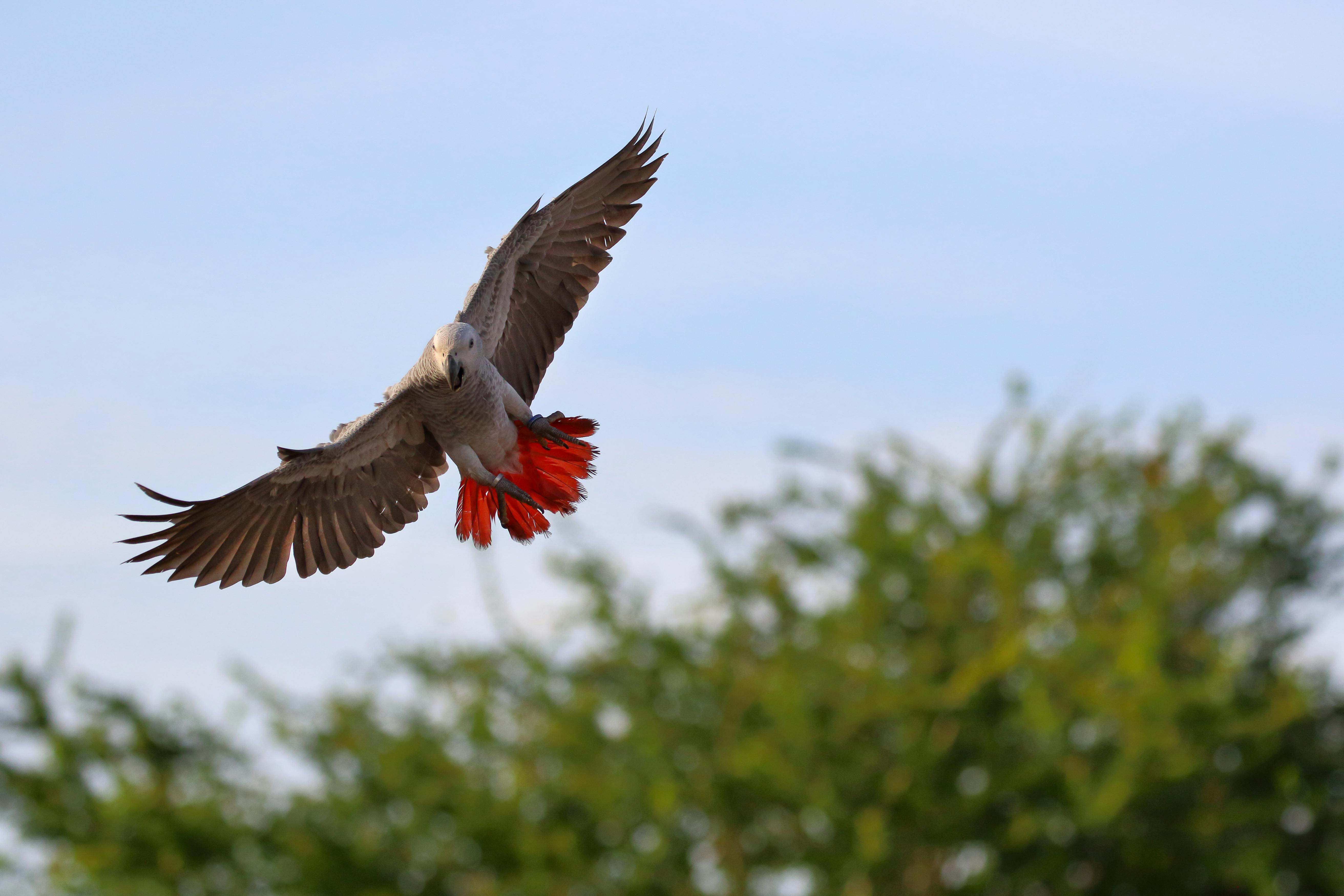
Deep in the African jungle, large swarms of chittering parrots soar between the treetops. These grey parrots are highly intelligent and social birds. Unfortunately, this image seems to become a thing of the past, as grey parrots are widely captured to sell as pets. As a result, less than 10% of the original population remains in some of its range countries! It is therefore important to protect the grey parrot to ensure the survival of this striking species.
Psittacus erithacus

Up to 60 years
46 – 52 centimetres
33 – 40 centimetres
400 – 550 grams
The grey parrot is a medium-sized species of parrot. As its name implies, it can be recognised by its grey plumage, as well as its distinct bright red tail feathers. It has a curved, sharp beak that it uses as a nutcracker. Its legs have four toes each, two of which point backwards. These help the parrot to grasp tree branches.
Grey parrots are native to central and western Africa, from the Ivory Coast to Kenya. Here, they live in tropical rainforests, mangrove swamps and wooded savannahs on the edges of rainforests.

Grey parrots live in large groups, which occasionally split up into subgroups to search for food. Afterwards, they reunite with the rest of the group. Such a group consists of several pairs, which usually stay together for life. From about three years of age, they begin their search for a mate. Before the breeding season, they look for a tree cavity to build a nest in. Usually, the female incubates the eggs while the male brings her food. Once the eggs hatch, both parents feed the young.

Grey parrots can mimic many different sounds, including human speech. This makes them very popular as pets. But because so many people in rich countries wanted to have grey parrots, these birds have been captured on a massive scale from the wild. Poachers attach grey parrots to nets as bait for their peers. Once the group arrives to investigate, the poachers close the nets. The birds are taken away in cramped crates to sell to traders from around the world. As a result, grey parrots have declined significantly in numbers and even become extinct in some countries.

Fortunately, the trade in wild grey parrots has been banned worldwide since 2017. Only parrots that come from authorized breeders may still be sold. Although poachers still capture wild birds and resell them to traders, customs officers and rangers can now step in to enforce the ban. They confiscate parrots without valid documents and take the birds to shelters. If intercepted in Central Africa, these animals can sometimes be released!
The grey parrots at Rotterdam Zoo are animals which were previously confiscated because the proper documents were missing. Therefore, these birds are potentially wild animals that might otherwise have ended up alone in a living room. At Rotterdam Zoo, they live with their peers and have a large aviary with several nesting sites at their disposal. They share this aviary with a number of other African birds, such as the purple glossy starling and the green turaco.